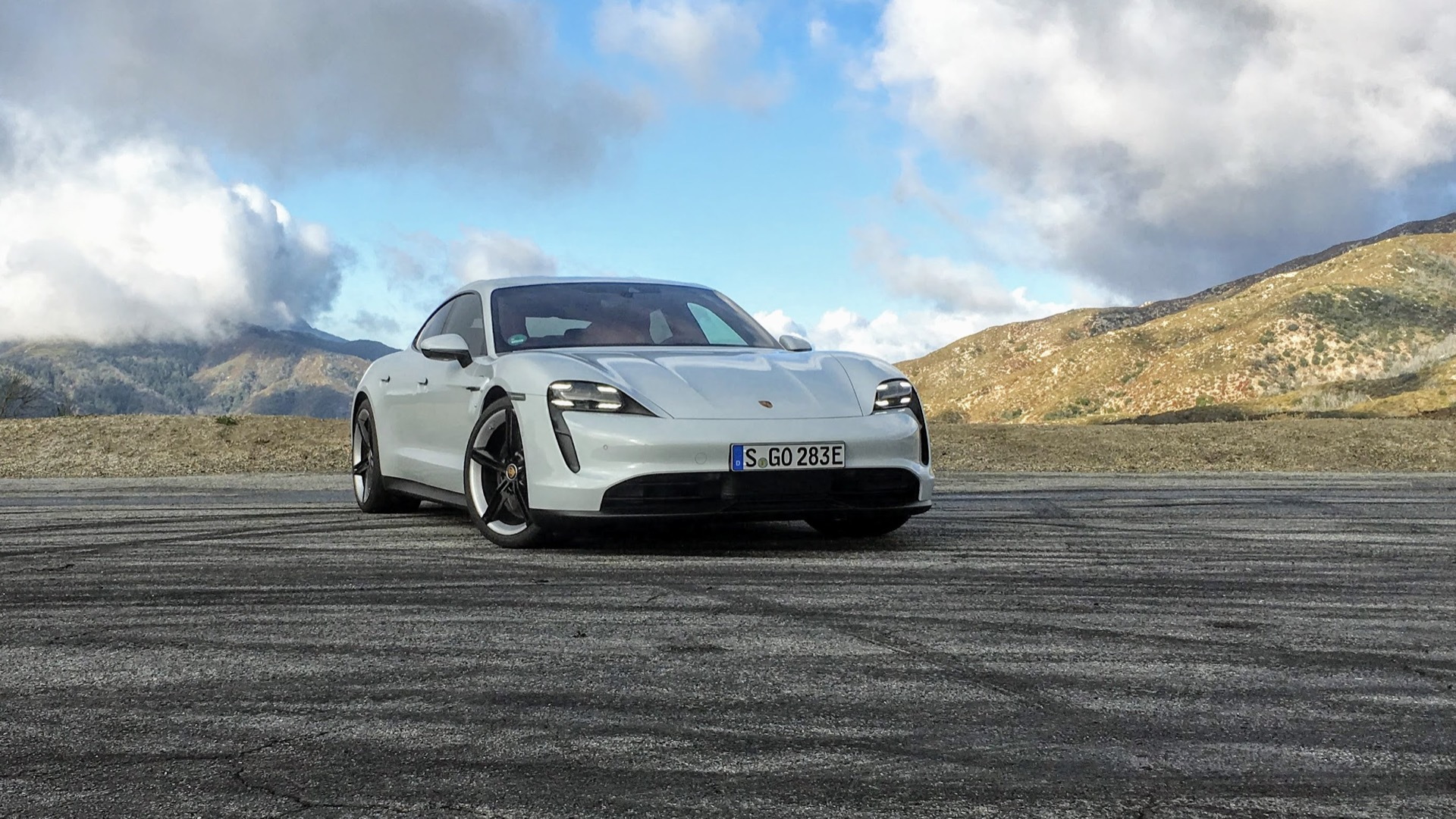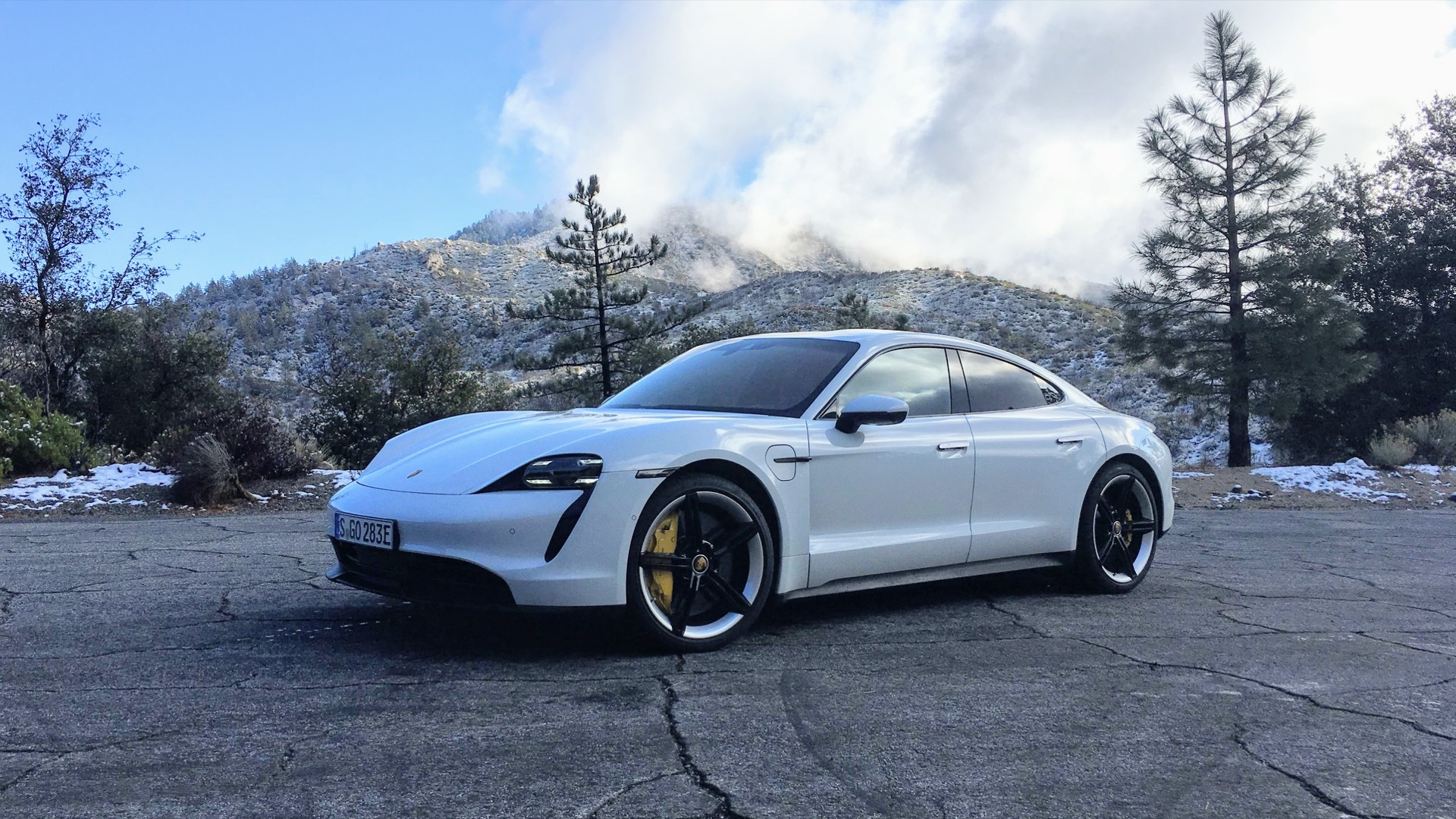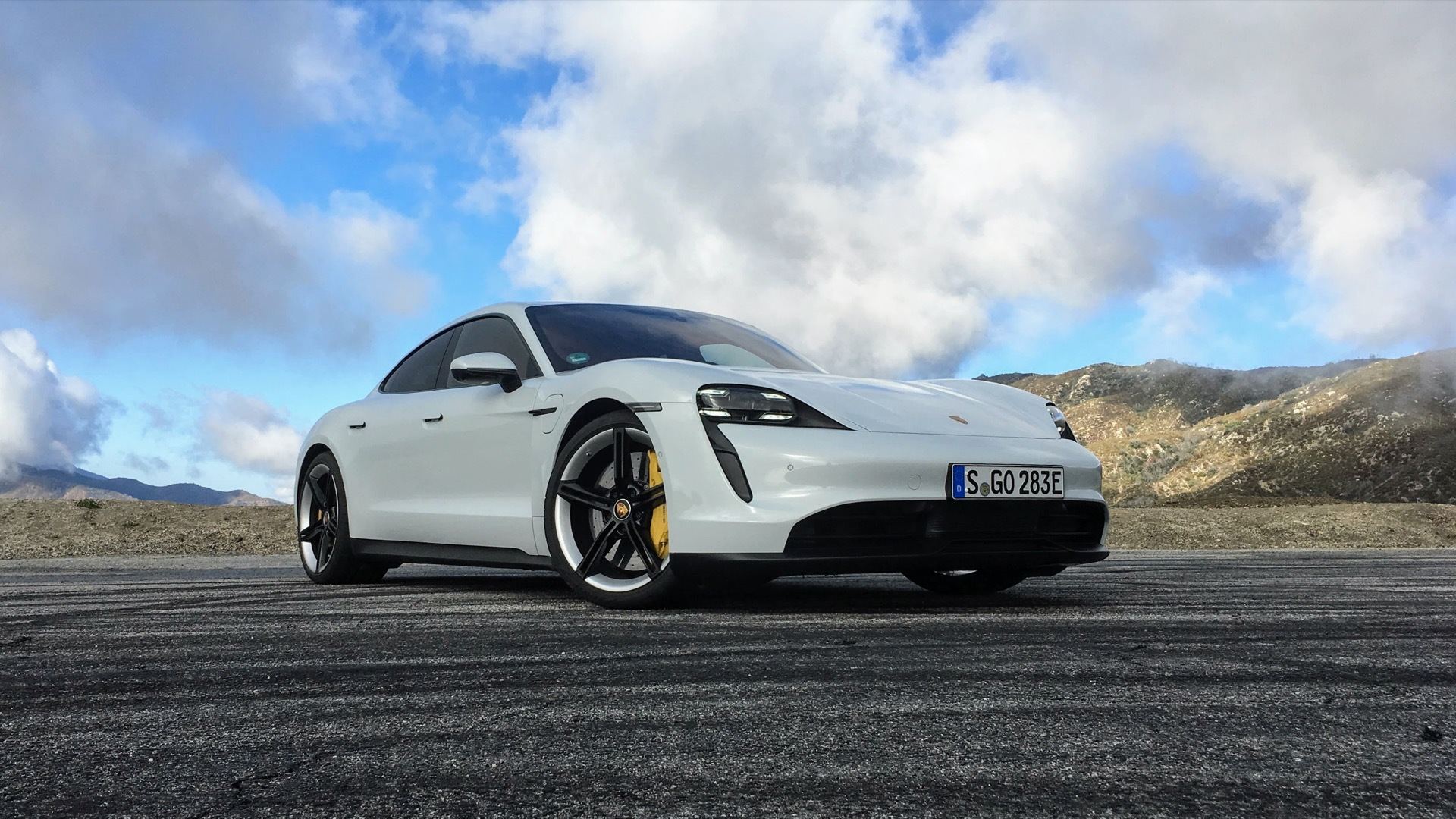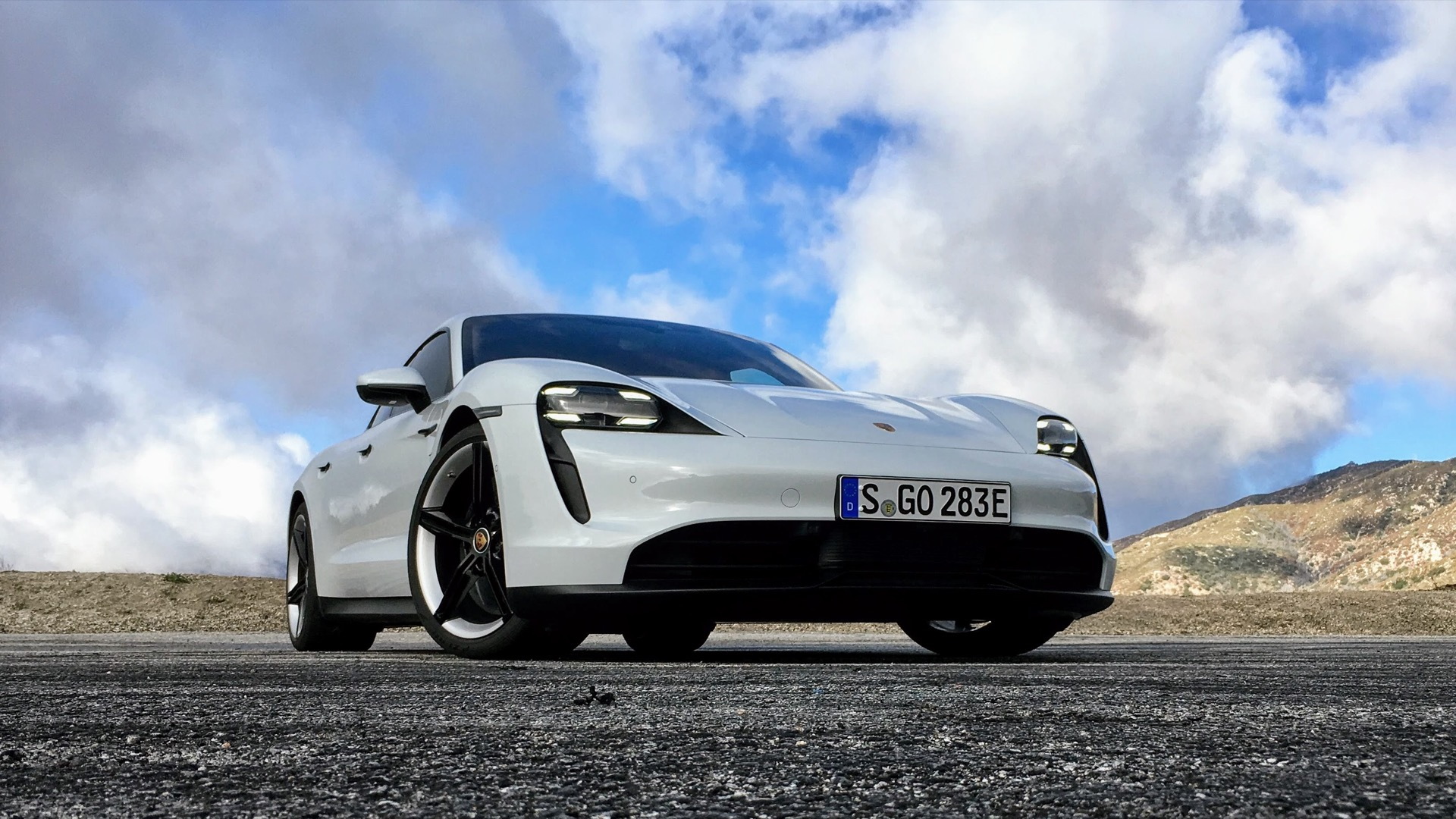The 2020 Porsche Taycan 4S very well may be the one in Porsche’s new electric-car lineup that matters most.
After initial badge-bragging of initial Turbo and Turbo S buyers subsides, the 4S likely will make up the bulk of Taycan deliveries. Taycan 4S models, if we suspect they’ll follow Porsche’s pattern with the 911 4S, are less likely to be garage queens and more likely to actually be daily-driven.
They’re probably also more likely to be spotted by the Tesla-faithful, and perhaps tease a few of them away from their allegiance.
I’ve driven many Porsches and understand their allure. In the sports-car brand’s modern rollout cadence, the 4S is the one that’s typically the bargain of the lineup and offers nearly all the advanced engineering—and many of the options—of the most expensive models in the lineup at a fraction of the cost.
With that expectation, I dove eagerly into two different drive opportunities in recent weeks with the Taycan 4S—one of them during the LA Auto Show nearly three weeks ago, the other last week north of the Arctic Circle, in Finland, and culminating in some dynamic lessons on a frozen lake.
The one for people without garage managers
On the road, it’s hard not to see the 4S as all the electric performance car you’d want or need. In its $109,370 Performance Battery Plus (93-kwh) form, the Taycan 4S offers up to 563 hp in its Launch Control overboost mode, with 477 pound-feet of torque—with the key difference being a smaller rear motor versus the Turbo or Turbo S.
A $103,800 base 4S version with the 79-kwh battery pack will join around June 2020, and both promise 0-60 mph acceleration of 3.8 seconds and a top speed of 155 mph (versus 161 mph and 2.6 seconds for the $185,000 Turbo S).

2020 Porsche Taycan 4S first drive - Los Angeles, CA
On canyon roads leading us up Angeles Crest from Los Angeles, and then on frost-packed rural highways in Northern Finland and a frozen lake, we managed to get an impression of the 4S that transcends its fully electric powertrain. It’s a comfortable touring sports car and takes advantage of the full suite of Porsche ride-and-handling tech such as Porsche Dynamic Chassis Control Sport and rear wheel steering., The systems have an almost magical effect on body control for the heavy, sedan that weighs nearly 5,000 pounds, and rear steering boosts maneuverability at city speeds and stability at high speeds.
For more about what it’s like to drive the Taycan fast, and sliding on a frozen lake with seemingly too much traction and the hair-trigger responsiveness of an electric powertrain, see my first drive over at Motor Authority. For the rest of this drive, especially in the absence of EPA range ratings so far, I wanted to provide some observations on efficiency as well as how the Taycan’s tech works in the real world.
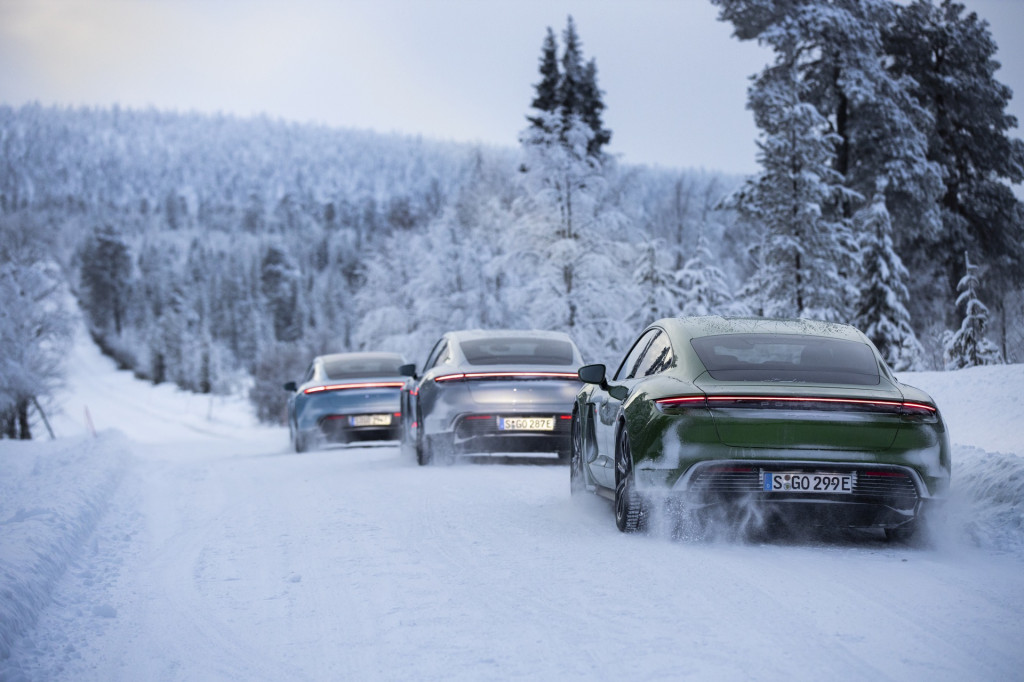
2020 Porsche Taycan 4S - Levi, Finland
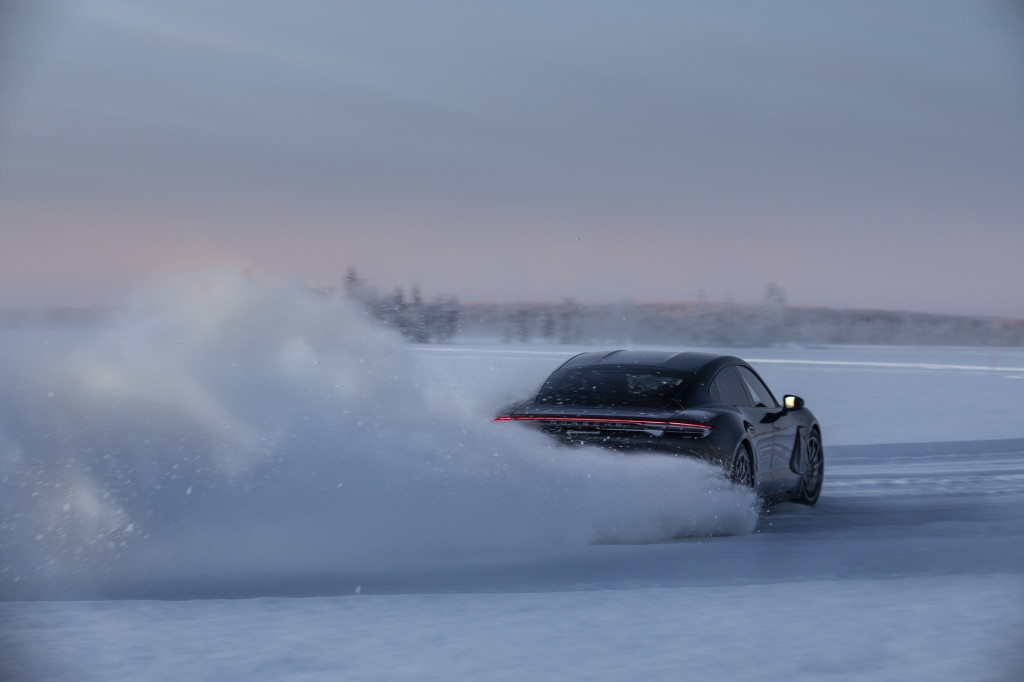
2020 Porsche Taycan 4S - Levi, Finland
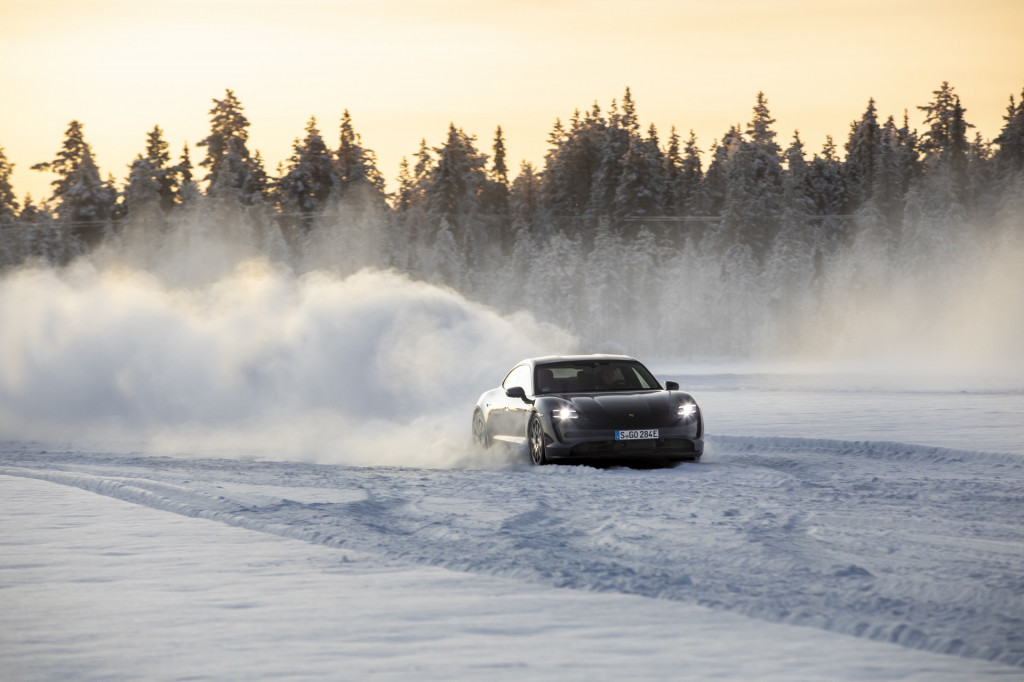
2020 Porsche Taycan 4S - Levi, Finland
With range figures not yet out for the Taycan, we thought we’d give you a good rundown of what we saw in the 4S.
According to the trip meter for the LA portion of the drive—until we pulled up to the charger—we averaged 44.7 kwh per 100 miles (and 29 mph) over 116.3 miles, which suggests a range short of 200 miles during a drive that was aggressive, over mountain roads, and including multiple full-acceleration runs. After charging, for a driving stint that was mostly a low-speed freeway creep back to a staging area in downtown LA, we averaged 34.7 kwh per 100 miles (and 22 mph) over 13.6 miles. That stint suggested in the vicinity of 250 miles on a full charge.
At a charging stop at an Electrify America station in Burbank, California, we connected the Taycan 4S to a 350-kw charger at a 40-percent state of charge, where we added 40.5 kwh over 21 minutes, to reach 85 percent. In that time we saw a peak of just 150 kw, only momentarily. A Porsche spokesman told us that it was charging at 800V.
In the cold
Then in Finland, In a drive at 26 degrees Fahrenheit, with generous use of the defroster and heat to maintain comfort and visibility, we started out from our hotel with 185 miles of indicated range and 89 percent state of charge, and drove 90 miles from our hotel to the frozen lake.
Pulling in, we had an estimated 78 miles of range remaining. The trip computer said that for the journey we averaged 29.2 kwh per 100 km, or 47.0 kwh per 100 miles—likely putting out usable range in those temperatures at about 180 miles.
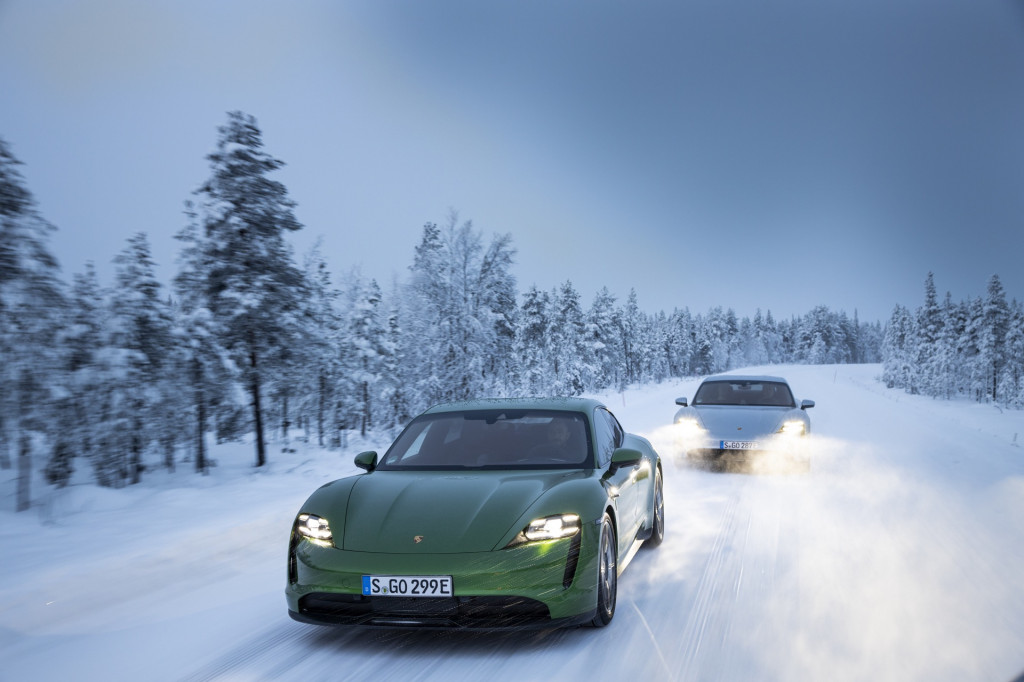
2020 Porsche Taycan 4S - Levi, Finland
Porsche notes that the battery is pre-emptively heated, and the battery pre-conditioning doesn’t impact state of charge when the vehicle is plugged in. Performance isn’t impacted at colder temperatures, according to Porsche.
Regen is (mostly) for the brake pedal
Regenerative braking is an important component of electric cars. Porsche doesn’t offer single-pedal driving or an aggressive regen setting—it’s part of a long, somewhat convoluted argument Porsche engineers make about why strong regen doesn’t make sense—but it does offer an off (glide) setting, an on setting that amounts to mild regenerative braking when you lift off the accelerator, or an Auto setting.
The Auto mode was the most intriguing. Based on following distance to traffic ahead, the Auto mode would ramp up regenerative braking to well beyond what you could access otherwise without the brake pedal. It seems like it might provide more efficient driving in commutes, but we want to see data.
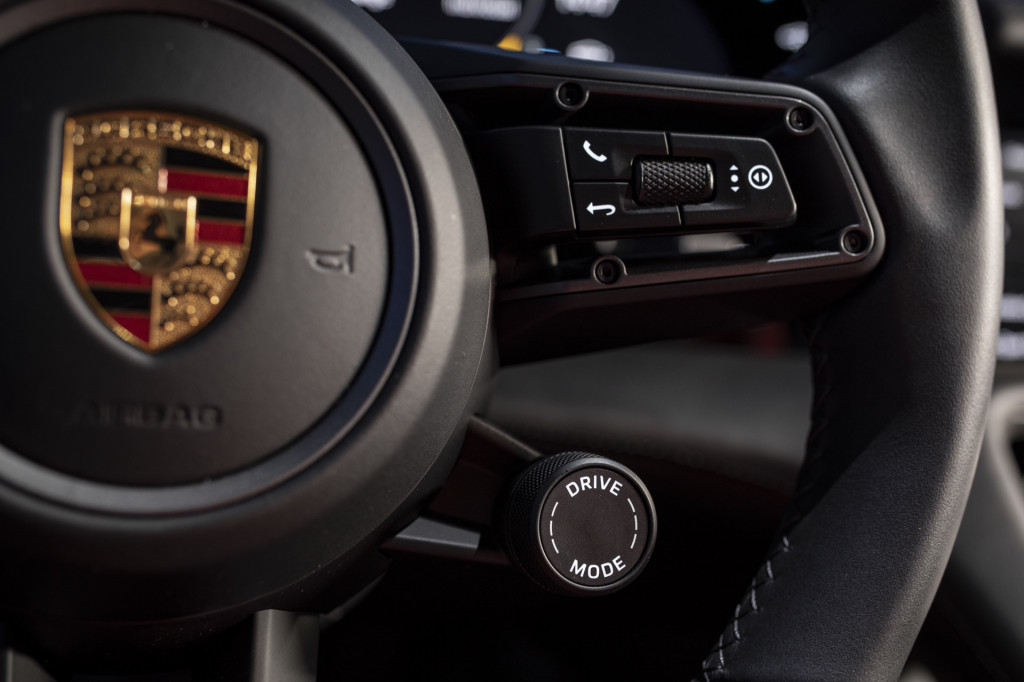
2020 Porsche Taycan 4S - Levi, Finland
Unlike most other automakers, Porsche is straightforward about what its range meter uses for that calculation. It says that the calculation uses the Taycan’s actual consumption history for the past 600 km (373 miles), modifying for driving behavior, climate control, on-board power consumption, the drive mode, and whether you’re using route guidance. Based on what we saw, the trip meter was if anything a little pessimistic, which is what you want.
CarPlay and USB-C: Take it or leave it
Porsche only offers Apple CarPlay in the Taycan despite consternation from some, and not Android Auto compatibility. Taycans in the U.S. will also be USB-C only, so get your adapters and dongles ready. The port in front is fully CarPlay ready, while you can play music and media through the other; in back there are another two USB-C ports that are meant for charging.
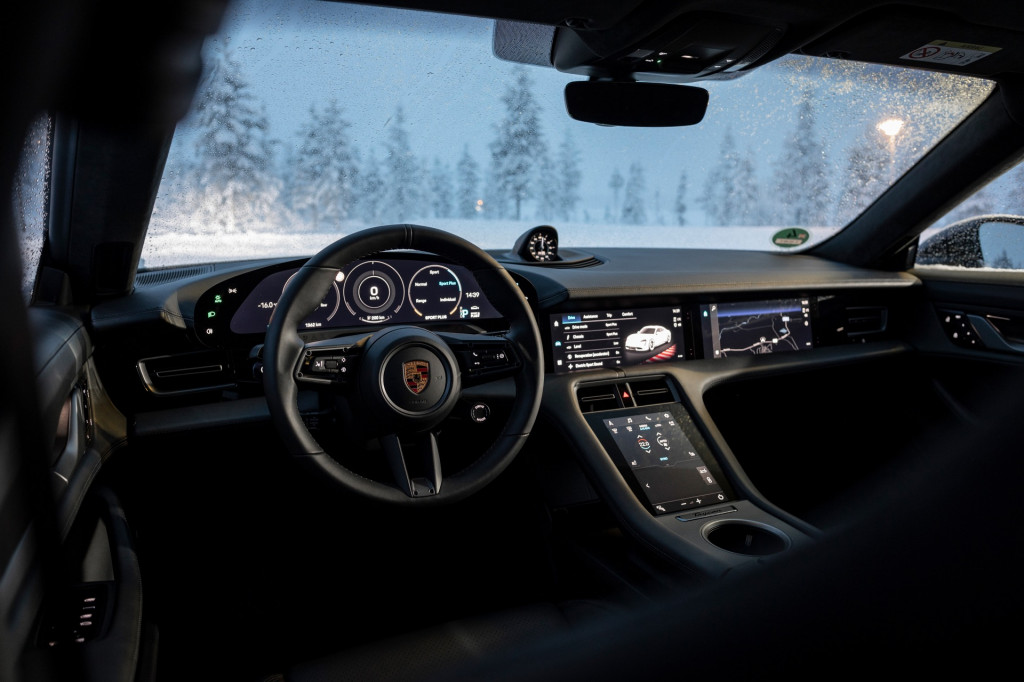
2020 Porsche Taycan 4S - Levi, Finland
Based on these experiences with the Taycan, across climates and continents, we have a lot of confidence in the Taycan’s performance and range. Efficiency will improve over time, but here Porsche has set a performance and driving enjoyment bar that’s second to none.
Porsche provided travel and lodging to Internet Brands Automotive to bring you this firsthand report.
